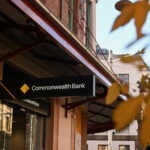LONDON (Reuters) -British consumer price inflation increased for the first time this year in July, official figures showed on Wednesday, but the rise was smaller than expected as services prices – closely watched by the Bank of England – rose much less sharply.
The annual rate of consumer price inflation increased to 2.2% after two months at the Bank of England’s 2% target, the Office for National Statistics said, slightly less than the median 2.3% forecast in a Reuters poll of economists.
Sterling fell sharply against the U.S. dollar after the data was published on Wednesday and financial markets priced in a 47% chance of a quarter-point BoE rate cut in September, up from 36% before the data was released.
When the BoE cut interest rates from a 16-year high of 5.25% at the start of this month, it said May and June’s 2% inflation readings probably marked a low point for inflation.
The central bank expected CPI to rise to 2.4% in July and reach around 2.75% by the end of the year as the effect of sharp falls in energy prices in 2023 faded, before returning to 2% in the first half of 2026.
“Today’s data will give the Bank’s Monetary Policy Committee some measure of confidence that domestic price pressures are less likely to derail a sustainable return to the 2% target,” Martin Sartorius, principal economist at the Confederation of British Industry, said.
British inflation peaked at a 41-year high of 11.1% in October 2022 driven by a surge in energy and food prices after Russia’s full-scale invasion of Ukraine as well as COVID-19 labour shortages and supply chain disruption.
LONDON (Reuters) -British consumer price inflation increased for the first time this year in July, official figures showed on Wednesday, but the rise was smaller than expected as services prices – closely watched by the Bank of England – rose much less sharply.
The annual rate of consumer price inflation increased to 2.2% after two months at the Bank of England’s 2% target, the Office for National Statistics said, slightly less than the median 2.3% forecast in a Reuters poll of economists.
Sterling fell sharply against the U.S. dollar after the data was published on Wednesday and financial markets priced in a 47% chance of a quarter-point BoE rate cut in September, up from 36% before the data was released.
When the BoE cut interest rates from a 16-year high of 5.25% at the start of this month, it said May and June’s 2% inflation readings probably marked a low point for inflation.
The central bank expected CPI to rise to 2.4% in July and reach around 2.75% by the end of the year as the effect of sharp falls in energy prices in 2023 faded, before returning to 2% in the first half of 2026.
“Today’s data will give the Bank’s Monetary Policy Committee some measure of confidence that domestic price pressures are less likely to derail a sustainable return to the 2% target,” Martin Sartorius, principal economist at the Confederation of British Industry, said.
British inflation peaked at a 41-year high of 11.1% in October 2022 driven by a surge in energy and food prices after Russia’s full-scale invasion of Ukraine as well as COVID-19 labour shortages and supply chain disruption.




